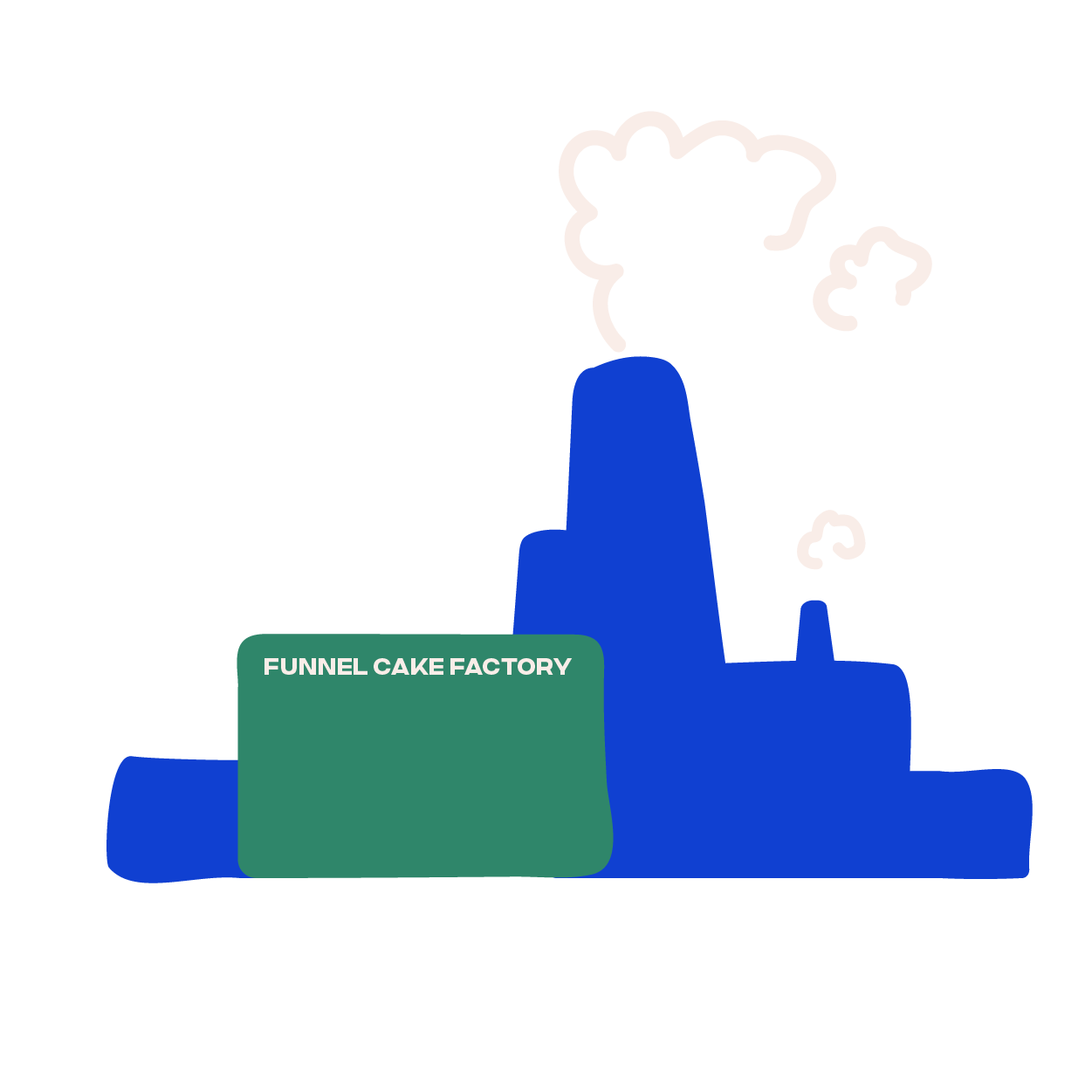
HubSpot Lead Scoring
Identify and target your most valuable leads.
Lead Scoring 101
Even with the most well-organized customer relationship management system (CRM), it can be difficult to identify actionable leads based on their behavior and prioritize leads and enable your sales team.
That’s where lead scoring comes in.
Lead scoring is a process designed to rank contacts based on attributes and behavior. This process for ranking allows you to bubble up your most valuable leads to the surface.
With lead scoring rules, you can separate out who represents your best opportunity to turn a visitor into a customer. Using all the information they've submitted and how they've engaged with your brand, HubSpot’s Lead Scoring can enable your sales and marketing teams to increase the rate at which those leads become customers.
Cutting Through the Noise
Lead scoring through HubSpot is about knowing where to focus your attention and when.
With thousands of contacts in your HubSpot account, it can be hard to grasp what’s relevant and what isn’t, along with which leads are worth pursuing and which aren’t. That’s why it’s important to have a tool that can assist with the process.
Adopting a strategy that employs lead scoring can ensure that qualified leads never have the chance to slip through the cracks.
Lead scoring also acts as a way to rank leads who may be qualified, arguably, more than others. This is because lead scoring automatically lets you rank, in order of your goals, all the leads in your system. This lets sales and marketing focus their time intelligently and with greater predictive accuracy.
Ideal Customer Profile
If you could imagine your ideal customer, who would that person be?
Knowing the answer to that question may come from your knowledge of your industry, experience with existing customers, or another data source.
You’ll use this data about your contacts to build an ideal customer profile, which HubSpot defines as: “the perfect customer for what your organization solves for.”
Attributes that make up your ideal customer, might include:
Job Title- Do they have a specific job title with decision-making power?
Geography- Do your customers need to be located in a certain area?
Budget and Revenue- Is there a certain size company you need to work with?
Note that it doesn’t matter where you get this information from, as long as it’s accurate and fits your business. Once you have this information, you can build the profile accurately to start building out your lead scoring system.
Building Buyer Personas
The other organizational tool you can use for lead scoring is buyer personas. Buyer personas are fictional stories that describe or represent your customers. More than almost factual descriptions described in ideal customer profiles, buyer personas are intended to describe the motivations and goals of your potential customers.
The factors can influence how you set up lead scoring and which values are the most important. Specifically, you’ll create and set up these personas in HubSpot—thus letting you assign personas directly on your account.
Typically persona’s involve some cutesy name like “Technology Ted” or “Grant-Seeking Gilda” — the intention is to describe groups of people so that you can tailor and adjust the customer journey for those users.
However, you can also use your buyer personas as a new way to qualify leads.
Lead Scoring Resources
Adorable little wizard from HubSpot that helps you generate your first personas.
“Ideal Customer Profiles and Buyer Personas—How Are They Different?”
Great overview of the difference between personas and ICPs.
Lead Scoring 101: How to Use Data to Calculate a Basic Lead Score
A great wizard and starting point for building a buyer persona.
Building Your Lead Scoring System
Data is at the heart of our lead scoring system. Without it, there’s literally nothing to power, judge, and evaluate your leads.
The question is: where does that data come from?
While there’s a slew of external systems, data augmentations, and unscrupulous people very willing to ask for your data to scrape and augment— most of your data should come from what you can generate yourself and that means one thing: objects.
Building Buyer Personas
An object is essentially a data structure, that is, a thing. In the case of HubSpot, while you can certainly create objects (on an enterprise level product), there are four basic objects you need to be concerned with:
Contacts
Companies
Deals
Tickets
These four objects represent the standard objects included in HubSpot. They are the core of how you interact with the system. They are, in effect, the data structures where all your data is stored.
So, what are properties?
Properties are individual data points within a specific object. While that sounds confusing, the concept is easier to understand than you think. Let’s examine a hypothetical object to break it down further:
Let’s imagine we have a contact named Emily. Emily is a person, so, shocker, she’s presented as a Contact.
Emily’s record as a Contact has multiple Properties attached to it. These properties become the basis of your HubSpot lead scoring and can include things like:
Email Address
Name
Telephone Number
State/Region
Favorite Ice Cream Flavor
Preference for dogs or cats
Each of these contact properties can be anything, but the point is that properties can change depending on the object.
Lead Scoring Resources
How to Use Manual Lead Scoring in HubSpot
An excellent guide to setup manual lead scoring in HubSpot.
The Savvy Marketer’s Guide to HubSpot Lead Scoring
Great overview of the difference between personas and ICPs.
Hacking HubSpot’s Lead Scoring System
An overview of the limitations of HubSpot lead scoring
Putting It All Together
Now that you have good knowledge of the difference between objects and properties, we can start thinking in terms of objects and properties to help hone in our HubSpot lead scoring.
What’s important to keep in mind is that this isn’t a perfect process. One of the biggest rules we advocate in really all marketing operations is that nothing is a monolith. In other words, the lead scoring system you create now isn’t meant to last until the end of time.
Properties for Lead Scoring for Contacts
Objects, properties, records… while it may seem a little heady, in practice it’s easier than you think.
When you think about lead scoring, thinking in terms of objects can open up the door for various ways you can execute lead scoring. Here are the most common ones we recommend:
Job Title
This is one of the most critical fields for a reason, and that’s because it relates to two aspects of leads: decision making ability and job function. It’s important to note, in terms of job titles, that certain people do not have the power to make decisions to hire you (so be suspicious about frequent submissions from interns).
But the other, perhaps more important, aspect is job function. A Chief Marketing Officer is, you guessed it, likely responsible for marketing. Someone who is an IT Security Engineer is likely concerned with internal security.
Geography
Some organizations can’t sell to companies in some regions or countries, whether it’s due to shipping costs to certain locales or competing sales regions. Geography matters and knowing those details can matter for big or small businesses alike.
Budget
You can’t afford to service some clients based on the size of their budget. Many organizations are timid about asking about budget, but frankly, you shouldn’t be. Even if a contact has your most ideal persona or ICP, none of that matters if their frame of reference for your services or products are on a different scale.
Properties for Lead Scoring for Companies
In the same way that you can target individuals based on their attributes for lead scoring, you can do the same things with companies. This is actually the basis for a lot of advertising on things like LinkedIn or Facebook: targeting companies based on industry, region, service offerings, etc.
Industry
Different industries have different inbound marketing needs. We sell a lot of services for HubSpot and certain industries or verticals are likely to use the platform. Sell coffee at a local kiosk in the mall? You are likely not using an advanced customer relationship management system like HubSpot to interact with your customers.
However, if you offer professional services for accounting to other high-end service-based companies, then HubSpot is an excellent choice (thus making you a target for Matthew Deal to sell services to you).
When thinking about industries, consider who you’ve worked with in the past and what type of systems they need for their work. Reviewing the industry types for past deals or opportunities that you’ve closed is a great way to look for future targets.
What Do They Sell (And How Can You Help Them)
We’re delving into some aspects of just basic qualification here, but it goes without saying that you need to slot your organization into fulfilling some need that another organization has. If you’re a premier consultant for funnel cakes technology, go after companies that sell or do something with funnel cakes.
Many organizations create a field that describes this such as “Product Focus” to describe the targets for your potential customer’s customers. Not only does this track your method of approaching them, but also translates to an efficient organization system for HubSpot.
Company Size
Company size is also another factor that’s quasi-related to budget. If the company is too big, then it might be an issue of capacity if you're a smaller organization. On the other hand, if a company is too small, they may not have the budget (or really organizational inclination) to support your services.
Company size impacts HubSpot lead scoring. Large firms might offer big deals, but strain capacity. Smaller ones might have quicker decisions but limited needs. Balance these factors in your lead scoring strategy.
Cumulative Lead Scoring
HubSpot lead scoring isn’t without its share of quirks and limitations and anyone delving into it should know. In fact, HubSpot lead scoring is unlike many other comparable eCRM lead scoring systems for one reason: cumulative lead scoring.
In this case, cumulative lead scoring means that whatever lead score a particular contact has, that score remains the same unless some other lead scoring rule changes that value. This is how many popular eCRMs like ActiveCampaign or Pardot work.
This means that, over time, leads that might not appear worth your effort may produce a high enough lead score through their behavior or attributes to focus your sales and marketing efforts.
One of the weird aspects of HubSpot is that altering any aspect of your lead scoring will retroactively alter the lead scoring for any of your existing leads.
Lead Scoring Based On Attributes
Let’s get this out of the way: HubSpot is excellent at lead scoring based on attributes. If you have individual properties about companies, contacts, or deals, then you have a good base for lead scoring.
Again, some good starting points include:
Company Size
Job Title
Region/Geography
Budget
Industry/Vertical
Again, keep in mind that lead scoring based on attributes will change if you change the conditions for lead scoring.
For example, if you decide that you want to remove a positive lead scoring aspect for geography— HubSpot will retroactively remove those values from your contacts across the entire system.
Lead Scoring Based On Behavior
The biggest limitation on lead scoring, again, specifically in HubSpot is that it’s awful for lead scoring based on behavior.
One of the aspects of lead scoring to keep in mind is that you may not know attributes related to a potential lead. After all, people fill in fake names, Gmail email addresses, and false telephone numbers all the time.
But behavior, or how they interact with your brand, is another way you can gauge how interested they are in your product or services.
If you’ve recently sent out a proposal and are wondering if someone is considering your brand—HubSpot can tell you if they’re visiting your website, downloading your gated content, or reviewing one of your service pages.
For very simple behavior based lead scoring - HubSpot is perfectly fine. But, again, because of the limitation on cumulative actions, you won’t be able to set up a rule to add two points for every form submission or a single point for a page visit.
You should still certainly attempt to set up some aspect of lead scoring, but it’s important to take the data with a grain of salt.
Building Your Lead Scoring Model
It can seem intimidating to build a “model” for lead scoring, but again, this isn’t the lead scoring system you’ll be using forever. It’s the lead scoring system that you’re using right now.
Step 1. Download Our Lead Scoring Spreadsheet
The first step towards building your lead scoring system is downloading our Lead Scoring Spreadsheet here. Filling out the form below will send you to a shared Google Document that we use to build our model:
Step 2. Gather Organizational Knowledge
Every organization has institutional knowledge related to the behavior of their best, ideal, or favorite customers. Everyone working within the sales and marketing team likely has some organization on these customers. Tap into your internal resources for directions on either your ideal customer profile or the best types of buyer personas. This will help you build out these personas and tailor them effectively to your business model.
Step 3. Company Size
While organizational knowledge is great, data is even better. You likely have access to some existing data within your HubSpot about past contacts and deals:
Content. Pieces of content or gated content that produced qualified leads. This can even include blog posts or other online content.
Lead Stages. Various lead stages for contacts. In regard to this, it’s important to pay attention to marketing qualified leads or sales qualified leads.
Decision Makers for Deals. Every deal has a central decision maker. To build this out, ask yourselves questions like:
What are the attributes of that person?
Is there enough of a pattern that you can justify a rule based on Central Decision Makers in Deals?
What spurs them to action?
More Resources
Deeper Dive Into Content
Best Practices for HubSpot Lead Scoring
Get a breakdown on how to incorporate lead scoring into your business process.
Set up score properties to qualify contacts, companies, and deals
Official documentation on leads scoring with multiple properties and objects


















